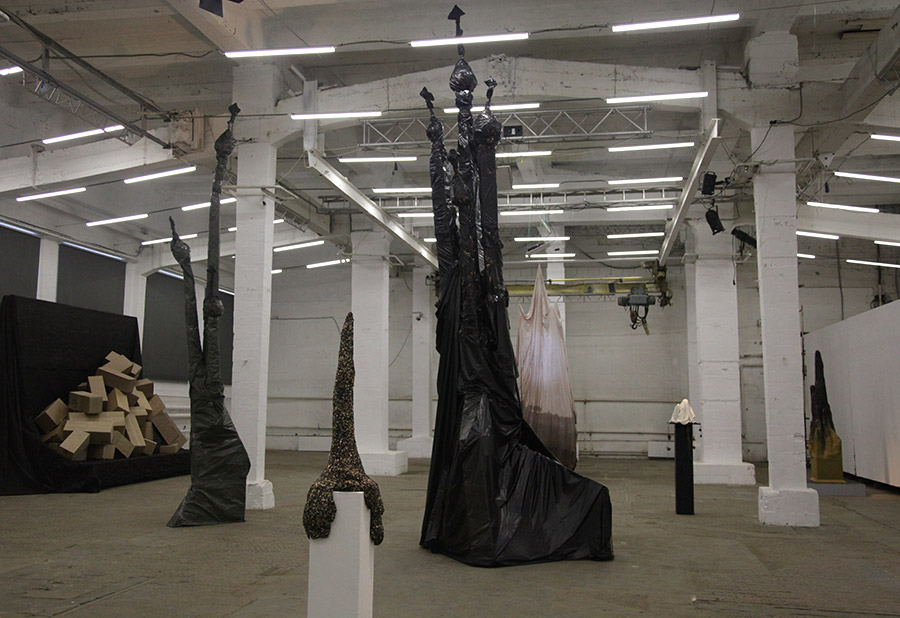| |
по-русски
en français
For Dmitry Bulnygin termitary is a symbol of the civilizational process. In a new series of sculptures and video mapping he quotes functional and decorative elements of buildings for housing and industrial purposes.
Ex columns, facades and bases have now faded and dissolved into a biomorphic mass growing in their place. These heaps are like trees, occupying ruins of forgotten civilizations - construction and household garbage serves now as a humus for roots and tentacles of sprouts. Dwellings from digested wood, foam, earth and feces speak of a new order of life. Modern ruins acquire epic forms, and nature becomes the main consumer of civilization waste.
In the outline of each termite mound one can see the typology of architecture, which speaks of the ideology of its epoch. Thus, the shape of the growing stalagmite forms the basis of commemorative monuments and triumphal columns. Pointing to the sky, they seem pointless in their death resistance. Often the causes of destruction are laid in the very structure of the "termitary": the mass flowing from the pipes as a result of overproduction - the excessive form destroys its base itself, and the stretched construction of the high-rise is deformed by its own weight. The next generation of architecture, expressed in Khrushchevkas housing blocks which caused mass migration, is presented here by a mountain of cardboard boxes: the realism of the dummy layout and the reality of the fragile material create the effect of a ghostly presence.
As for the buildings of the future, they have already decayed and are experiencing a renovation period. Towers – Dragons Snakes, with the bulbs of the domes on their ends - are the symbol of our time, when modern structures metaphorically fade shortly after their construction, and are replaced by termites of "generation 2", which speak of "spiritual height", but keep their macabre essence intact.
Louise Morin |
